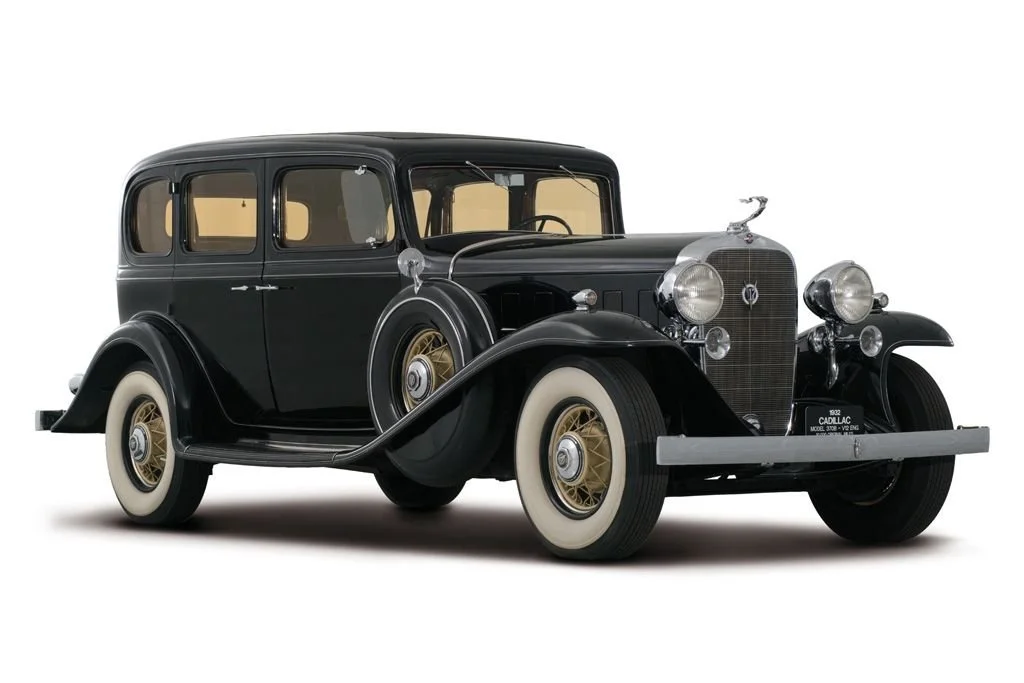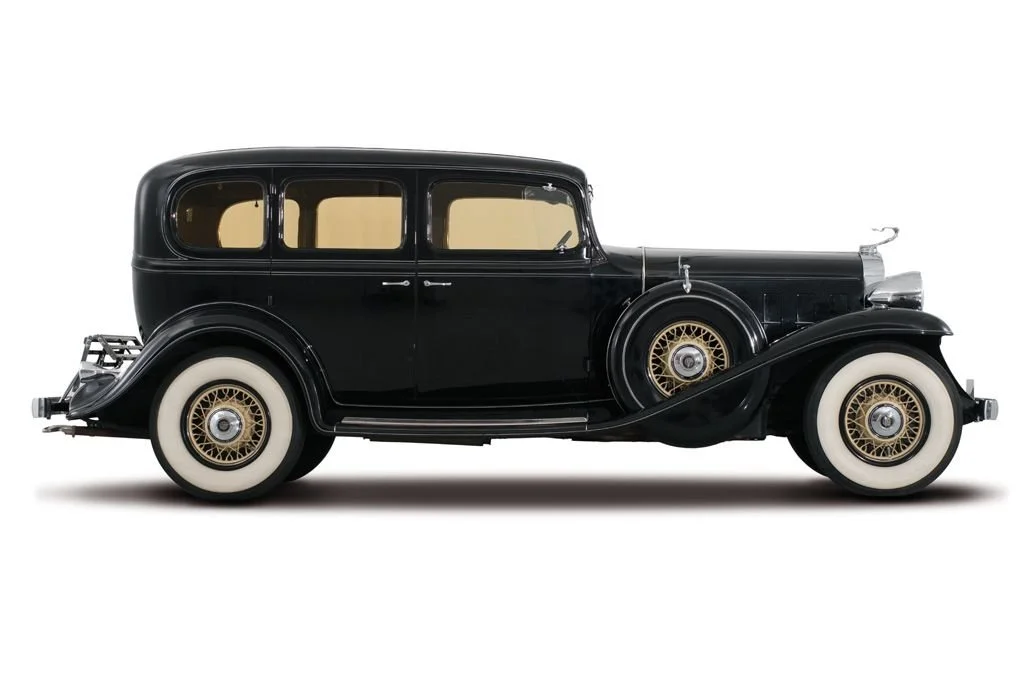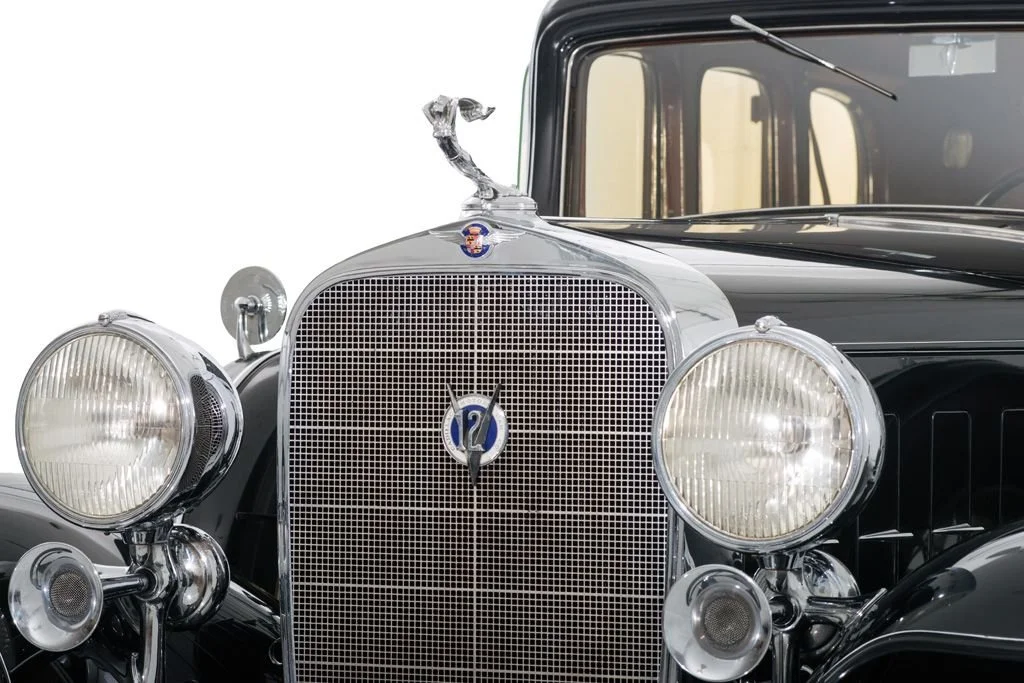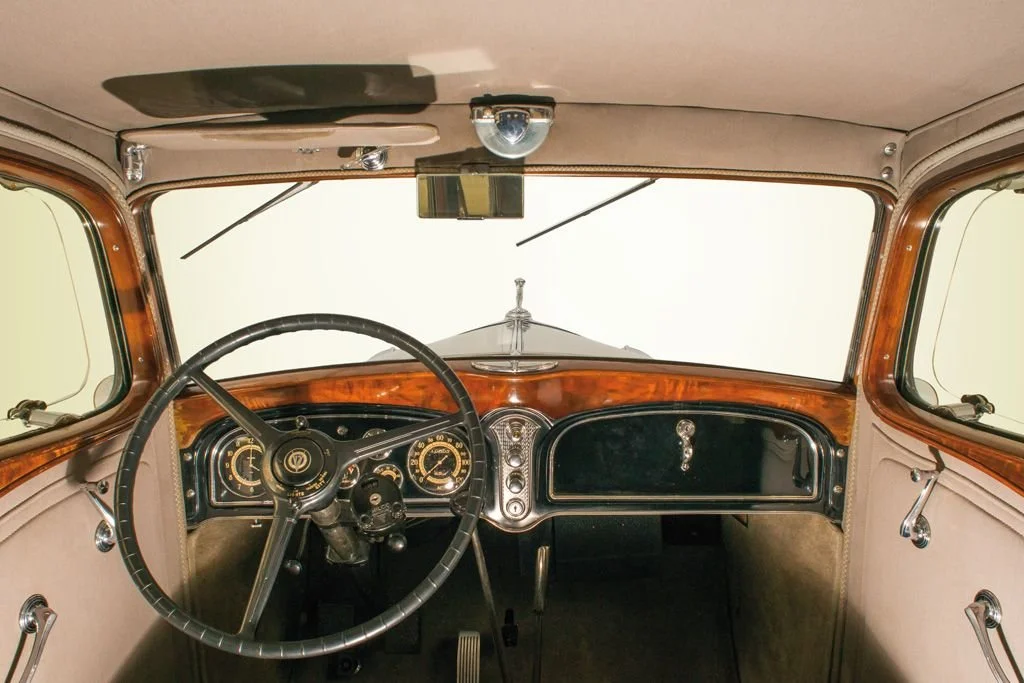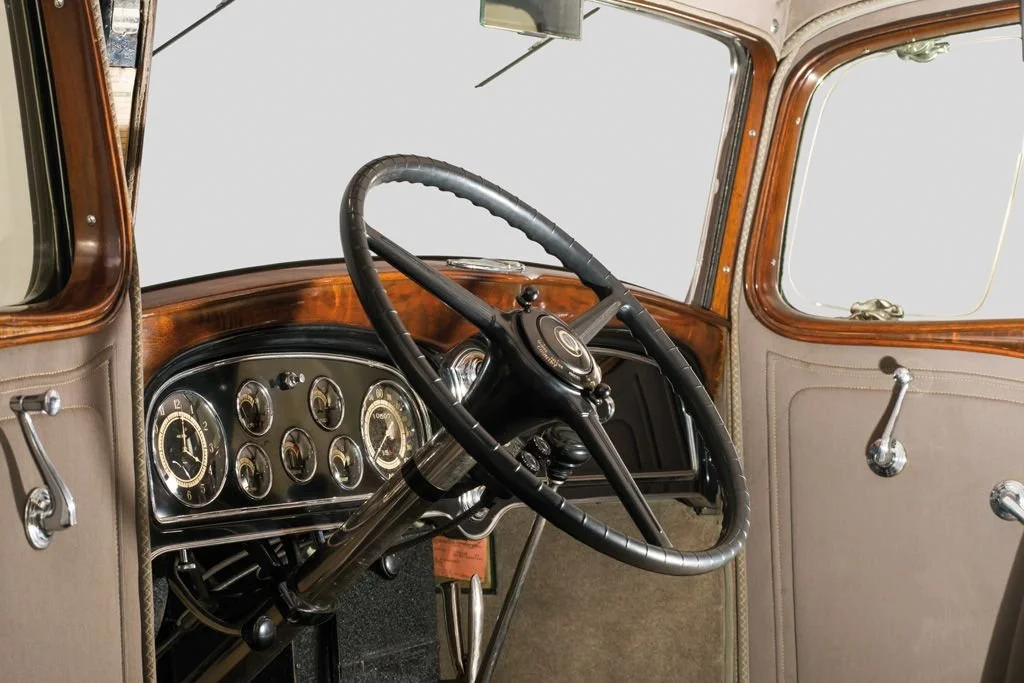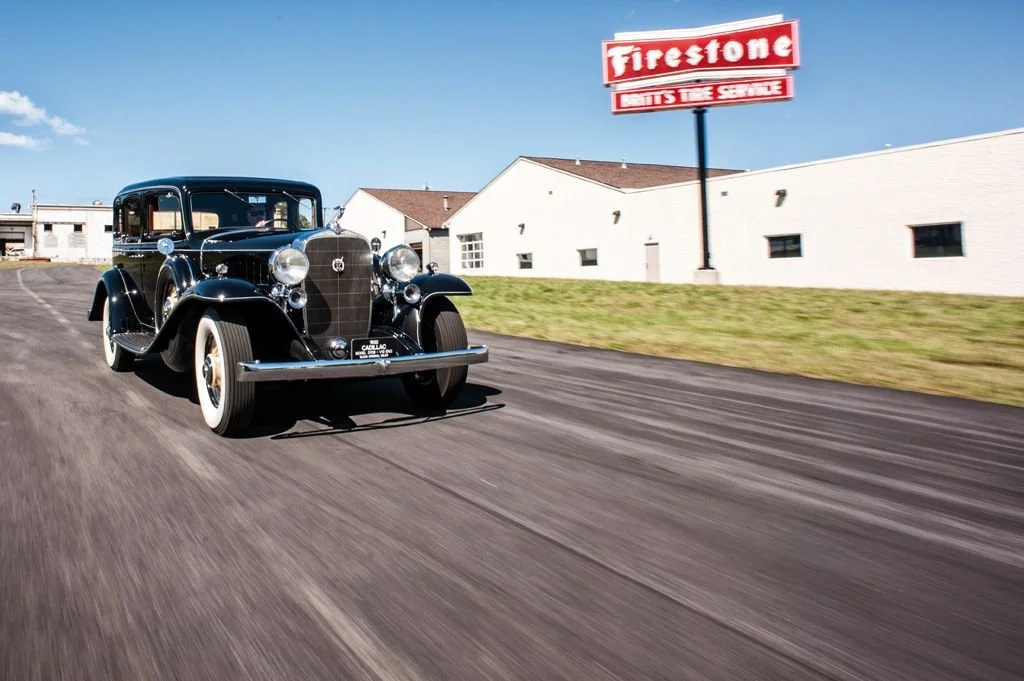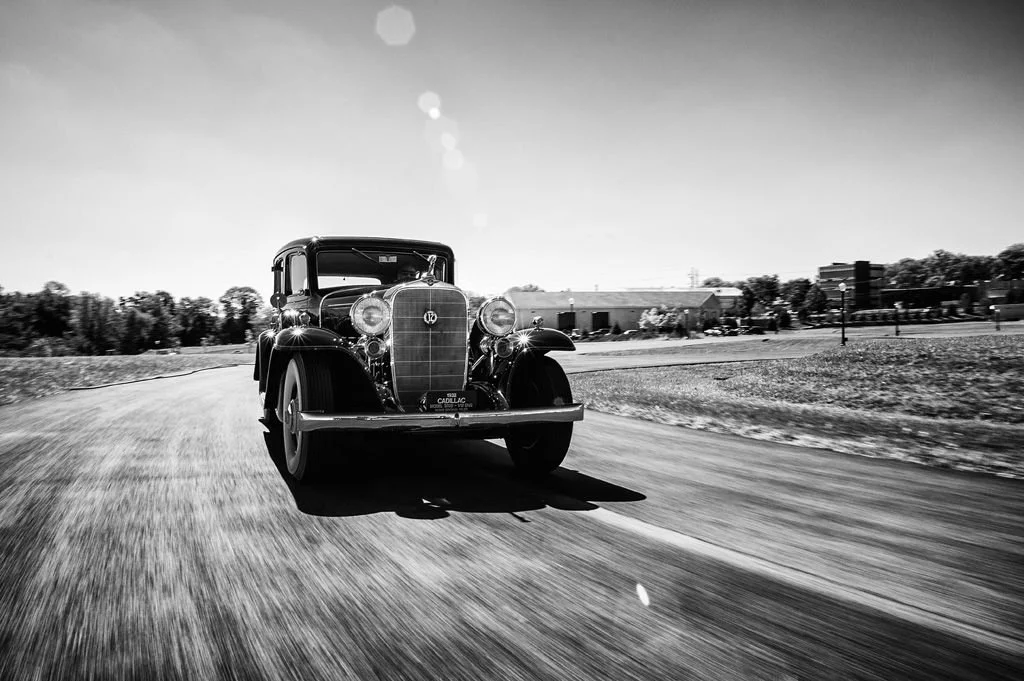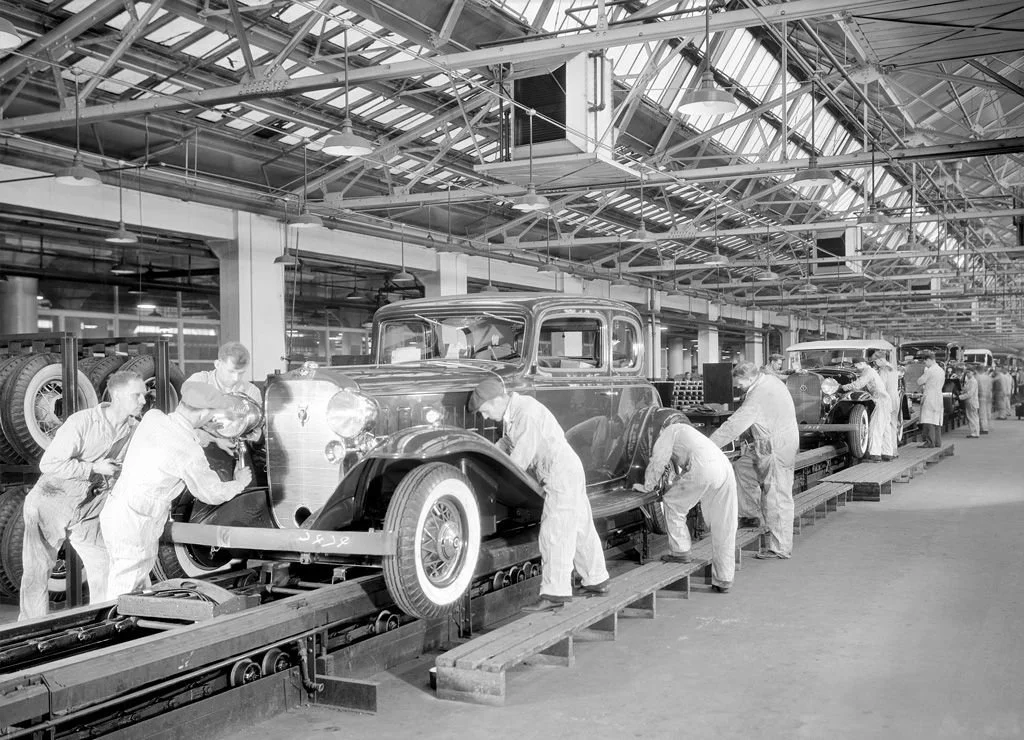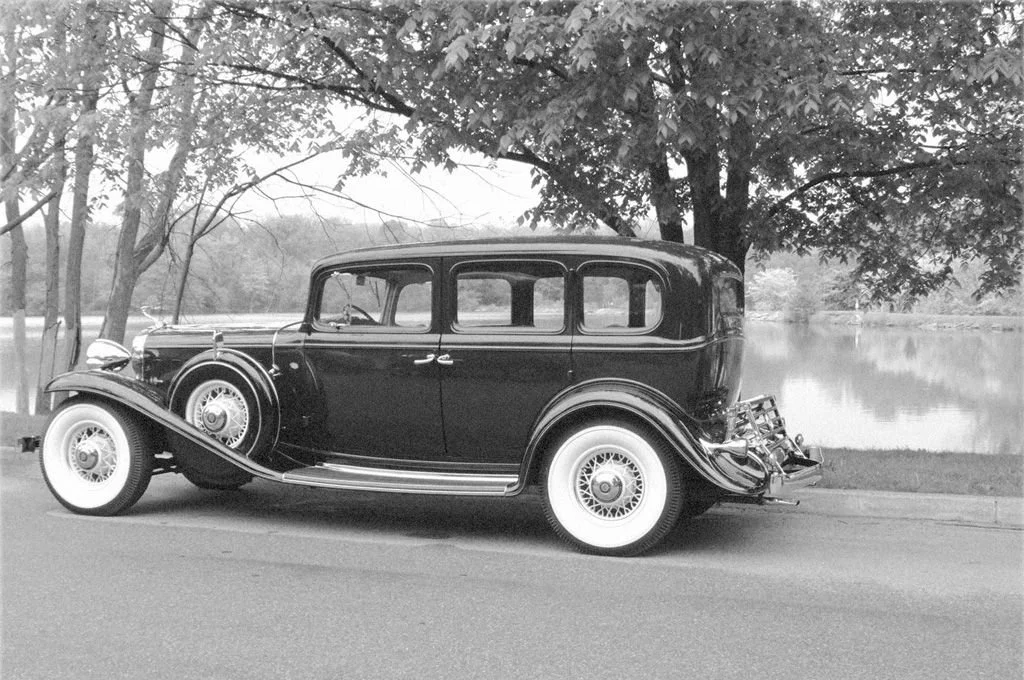-
This car was purchased by a collector from a funeral home in the 1950’s. At the time it had covered less than 10,000 miles. It was repainted in the original black lacquer at that time and remained in the collection of a single family for the next 50 years.
The car was acquired by The NB Center in the late 1990’s. The car still has less than 11,000 miles from new. It has never been apart or had any significant restoration work done other than that one repaint in the 1950’s and the repair of a cracked cylinder head. The original upholstery, with the exception of a few moth holes, is still in excellent condition. The yellow color of the glass is not tinting, this is the result of the early safety glass yellowing with age. -
Company
General Motors
Make
Cadillac
Model
370-B, 32-12-159
Body Style
Sedan , 4-door, 5-pass.
Body Manufacture
Fisher Body Company
Model year
1932
Wheelbase
134 inches
Length
N/A
Engine
V12, OHV, , 368 cid
Horsepower
135 @ 3400 rpm
Transmission
3-speed manual
Original Base Price
$3,595
Brand Production
4,740
This Car Production
1,740 of all V12 bodies -
Cadillac was a leader in the luxury car market in the US nearly from its founding in 1903. To serve the desires of their varied clientele in the early 1930s, cars were offered with V8, V12 and V16 engine options. The V8 and V12 cars shared the 134 inch and 140 inch wheelbase chassis. In fact, the two cars shared nearly all of the same bodies, only differentiated by the badging.
The mid-level cars made use of the 45 degree overhead valve V12 that displaced 368 cubic inches, 15 more cubic inches than the V8. Yet, the V12 was rated at 135 horsepower, 20 more than the V8 car. The biggest advantage of the V12 engine was increased torque allowing for more power to move along the heavy car and less shifting by the driver.
With GM’s art and colour department now up to full speed doing yearly design changes, 1932 was destined to be a one year only style. The styling differences from 1931 were subtle yet elegant. Changes including a lower roof line, longer hood and a restyle of the front end to soften the hard edges resulted in a car that looked decidedly cleaner and more modern than the 1930-31 cars.
Mechanically, the 1932 Cadillacs made notable strides. A vacuum-operated clutch with a freewheeling feature allowed for disengaging the clutch easily and better fuel economy. “Ride control” allowed the driver to control the shock absorbers while driving to adjust ride quality. Refreshed brakes, heavier frame, smaller tires, new gear ratios, and improved engines plus a whole lot more made the cars mechanically superior to the previous years.
The Great Depression was getting worse in the United States in 1932 and Cadillac’s sales continued to decline. Of the mere 4,740 Cadillacs produced in 1932 only 1,740 were V12. In contrast the top three automakers in 1932 each produced more than 100,000 cars with Chevrolet producing over 300,000. Cadillac was holding on for dear life.

